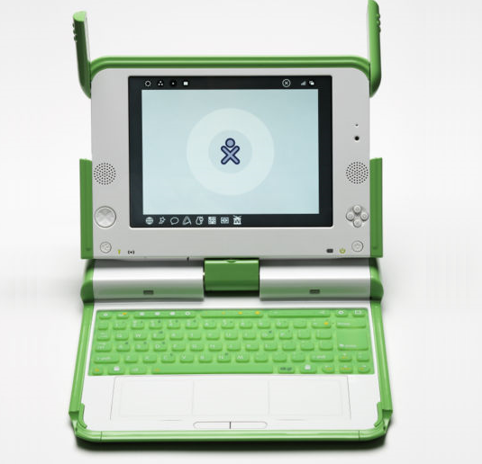one laptop per child (OLPC)
"One Laptop per Child" (OLPC) is a non-profit foundation with the goal of upgrading school education in developing countries with a simplest computer. The mastermind and founder of the initiative is MIT professor Nicholas Negroponte, who launched OPLC in 2005.
From the beginning, the foundation believed that its goal could only be achieved with a laptop model for less than $100. The development of the" XO-1" model therefore required the use of inexpensive components and free open-source software.
History of the project
Alpha testing of the laptops began in April 2006, the first 875 units were available in November 2006, and 2,500 beta laptops went into field testing in February 2007. Since November 2007, the devices have been shipped after the start of series production.
The cheapest laptop
The "XO-1" model has a graphical zoom interface called "Sugar", whose self-explanatory icons should be easy to use even by junior high school students. The operating system is a FedoraLinux distribution that has been especially optimized for sparing resource consumption.
The low-cost laptop uses an ARM processor and a solid state disk( SSD). The dimensions of the "XO-1" are 242 × 228 × 30 mm. The standard equipment includes a touchpad, three USB interfaces, a reader for SD cards, a microphone, speakers, and audio inputs and outputs. The display has a diagonal of 7.5 inches and a resolution of 1,200 x 900. The display requires less energy than LCD displays and can also be used in sunlight. It operates with three modes: in transmissive mode, it works like a color LCD display with backlight; in reflective mode, the backlight is turned off and incident light reflects off a specular layer and shines through the black and white pixels. This mode is comparable to that of e-paper. In the third mode, the transreflective mode, the display works with backlight and reflective layer. This mode also produces good results in high ambient light.
With a standard WLAN card according to 802.11b/g and 802.11s, up to 2 Mbit/s can be transmitted over 2 km. To forward the data, each laptop can establish a connection without a server to other laptops. If another device or a server has access to the Internet, the other devices also gain access. Since each laptop constantly serves as a router, the forwarding of data works even when the laptop is switched off.
The "XO-1" draws its power from a replaceable rechargeable battery or five AA batteries. In addition, there is a dynamo that is supplied with mechanical power via a hand crank, pedals or a pull cable. After one minute of charging, 10 to 20 minutes of use are possible.

